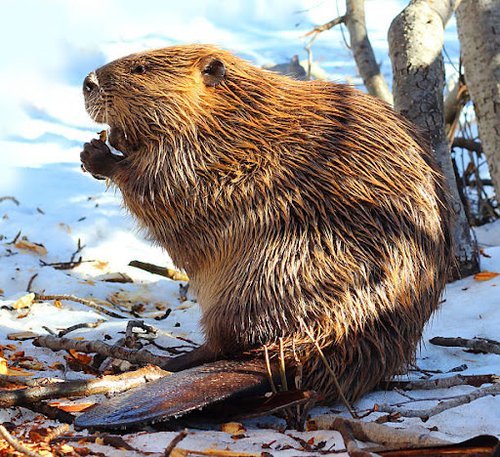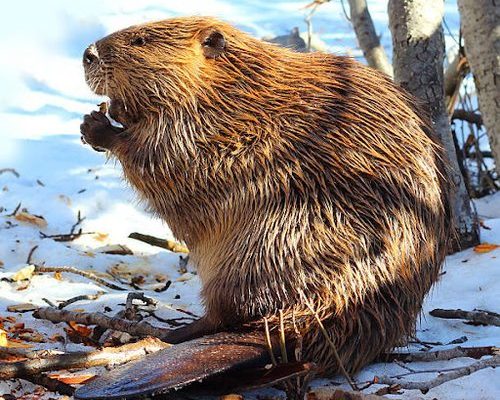
Just like any other animal, beavers are surrounded by a fair share of misunderstandings. Whether you see them in cartoons or catch a glimpse of one at your local wildlife park, it’s essential to separate fact from fiction. So, grab your favorite drink, and let’s dive into some common myths and misconceptions about beavers and discover the truth about these incredible animals.
Myth 1: Beavers Are Just Big Rats
One of the most common misconceptions is that beavers are nothing more than oversized rats. While both belong to the rodent family, beavers are their own unique species with fascinating traits. Beavers are larger than most rats and have distinct physical characteristics, such as their broad, flat tails and webbed feet. Their size can be pretty impressive, weighing between 35 and 100 pounds depending on the species.
Moreover, the way they interact with their environment is unlike any rat. Beavers are known for their dam-building abilities, which primarily serve to create a safe habitat for themselves. When they construct a dam, they’re not just playing around—they’re modifying their environment to ensure they have access to water and food. So, the next time someone compares a beaver to a rat, just smile and share what you know about these remarkable architects of nature.
Myth 2: Beavers Only Build Dams
Another common myth is that beavers only focus on building dams. While it’s true that constructing dams is a significant part of their behavior, it’s not the whole story. Beavers also create lodges, which are essentially their homes. These lodges provide shelter from predators and harsh weather. They have underwater entrances, allowing beavers to swim in and out while staying safe from threats.
You might be wondering why they need both dams and lodges. Well, think of the dam as a protective barrier that creates a pond, which in turn feeds into their lodge. This pond serves multiple purposes, from providing water for swimming and foraging to creating a safe space for raising their young. So, when you see a beaver working on a dam, they’re not just being busybodies—they’re creating a whole ecosystem!
Myth 3: Beavers Are Destructive Animals
Some people see beavers as nothing more than destructive pests, envisioning them gnawing down trees without a second thought. Here’s the thing: while it’s true they cut down trees, it’s not for mindless destruction. Beavers are selective about what they harvest, relying on certain types of trees, such as willows and aspens, for food and building materials.
In reality, beavers play a critical role in their habitats. Their dam-building behavior leads to the creation of wetlands, which support various plant and animal species. Wetlands are vital ecosystems that help filter water, control flooding, and provide habitats for countless organisms. So, instead of viewing beavers as villains, it’s essential to recognize them as key players in maintaining ecological balance.
Myth 4: Beavers Are Solitary Creatures
You might imagine beavers living alone in their lodges, but in fact, they are quite social animals. Most beavers live in family units, usually consisting of a breeding pair and their young kits. They work together to build dams and lodges, and they share the responsibility of raising their young. This social structure is crucial for their survival, allowing them to defend their territory against threats and efficiently gather food.
Family dynamics in beaver colonies are intriguing. Kits stay with their parents for about two years before venturing out to establish their own territories. This ensures that the next generation learns vital survival skills from experienced adults. So, the image of a lone beaver isn’t very accurate—their social lives are much richer and more complex than we often give them credit for.
Myth 5: Beavers Are Only Found in North America
Many people think that beavers are exclusive to North America, but that’s not true at all! While North American beavers are indeed well-known, the Eurasian beaver also exists and can be found across Europe and parts of Asia. Both species share similar behaviors, but they live in different geographical areas.
Eurasian beavers were once nearly driven to extinction due to overhunting, but conservation efforts have helped their populations rebound. This resurgence has led to the re-establishment of beavers in many historical habitats where they had previously vanished. So, beavers aren’t just cute little creatures of North America—they’re part of a larger, global narrative about conservation and biodiversity.
Myth 6: Beavers Are Always Active
You might think beavers are constantly busy building dams and lodges, but they actually have periods of rest. Beavers are primarily nocturnal, meaning they’re most active during the night. They spend a significant portion of their time foraging for food and maintaining their homes, but they also take breaks to relax and socialize with family members.
During the day, you might find them resting in their lodges or swimming around in their ponds. It’s essential for them to have downtime, just like us! This behavior plays an important part in their survival, allowing them to conserve energy and avoid potential predators. So, the next time you see a beaver on the move, remember they’re working hard but still carving out time for a little R&R.
Myth 7: Beavers Are a Nuisance
Finally, there’s the belief that beavers are nothing but nuisances that cause damage to property and farmland. While they can sometimes create issues for humans, it’s crucial to consider the larger context. Beavers help maintain healthy ecosystems, but their activities can clash with human interests, particularly in agriculture or urban areas.
When beavers build a dam, it can lead to flooding, which may affect crops or roads. However, many communities are finding ways to coexist with these creatures. Using strategies like beaver baffles—devices that allow water to flow through a dam without compromising its structure—can help manage water levels. It’s all about finding a balance between conservation and human needs.
Understanding beavers and the myths surrounding them gives us a clearer picture of their role in the environment. These fascinating creatures are not just cute and hard-working; they’re essential to maintaining healthy ecosystems. By recognizing the truth behind these misconceptions, we can appreciate beavers for the incredible animals they are.
So, the next time you see a beaver, whether it’s at a park or on TV, remember all the remarkable things they contribute to our world. Let’s celebrate their unique traits and the vital role they play in nature. After all, every creature has its story, and beavers have one that’s worth knowing!

